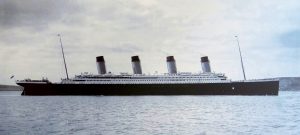Setting the Tone
Learning Goals
In this chapter, you will learn to:
- Use the affixes dis-, -ence, -ment, and -tion to understand words
- Identify the tone of a text
- Discuss and respond to the digital story Tanya
- Compare and contrast
- Identify and correct run-on sentences
- Use quotation marks
- Write a how-to paragraph about being a good listener

Get Ready to Read
- In one minute, make a list of as many feeling words as you can think of, such as “happy” or “sad.”
- How do people benefit from sharing their feelings with other people?
- Do you like talking to others about your feelings? Why or why not?
Vocabulary
Scan Setting the Tone to find a bold word for each of the following.
1. As a whole or in general
2. Described as larger or greater than it really is
3. Entertained
4. Feeling like you can do something well
5. Sadness from being apart from other people
6. To be very interested in something or someone
7. To have power
8. Influenced by someone in a good way
9. Very excited and happy
10. Wanting to learn more about something or someone
11. Pretending, cheating, or lying
Word Patterns
dis– is a prefix that means “opposite of.”
–ence is a suffix that means “having the quality of.”
–ment is a suffix that means “a state or process.”
–tion is a suffix that means “the act of.”
Use the vocabulary words and affixes above to build a word for each definition below.
12. ___________________________: the opposite of dishonest
13. ___________________________: the act of exaggerating
14. ___________________________: having a confident feeling
15. ___________________________: the state of being empowered or the process of becoming empowered

Reading Strategy
Readers check their understanding of a text while they read. When you struggle to figure out a word, don’t just skip it. Try this strategy instead. When you see a word you do not know, underline it. Go back and read the words before it. Then read the words after it. Now think of a word that would make sense for the word you underlined. Does it sound right? Does it make sense?
Try this strategy as you read Setting the Tone.
Check Your Understanding
1. How do stories reduce the distance between people?
2. What does tone refer to?
3. Draw a conclusion about some of the feelings Monte experiences in Tanya.
4. How would you describe the overall tone of Tanya?
5. Compare means to look at how two things are the same. Contrast means to look at how two things are different. Make a chart like the one below to compare and contrast All the Truly Important Things and Tanya.
| All the Truly Important Things | Tanya | |
| What illness plays an important role in the story? | ||
| Whose point of view is the story told from? | ||
| What kind of relationship is the main character looking for? | ||
| What important message is given to the main character? |
Writing Task
Think back to the events in your story. What feelings did you have during those moments? What overall tone would you like to create in your story?
Run-On Sentences
Grammar Rule
When two sentences are combined without a comma and one of the FANBOYS, or without a semi-colon, the result is a run-on sentence. Run-on sentences are a common sentence writing error.
Example: The blue whale is the biggest animal in the world a baby blue whale is bigger than an elephant.
This run-on sentence can be fixed in three ways:
- Separate the two complete sentences with a period:
The blue whale is the biggest animal in the world. A baby blue whale is bigger than an elephant. - Separate the two sentences with a comma and one of the FANBOYS:
The blue whale is the biggest animal in the world, and a baby blue whale is bigger than an elephant. - Separate the two complete sentences with a semi-colon:
The blue whale is the biggest animal in the world; a baby blue whale is bigger than an elephant.
The sentences below are run-on sentences. Correct them using one of the strategies above.
1. People thought the Titanic could not sink but it sank during its first trip across the ocean.
2. It was a calm and clear night yet the Titanic hit an iceberg.
3. There were about 2,200 people on the Titanic the lifeboats could only carry about 1,100 people.
4. The Titanic called for help the nearby ships did not get there fast enough.
5. That night, 675 people were saved and 1,503 people died.

Quotation Marks
Grammar Rule
A direct quotation gives the exact words of a speaker.
Cathy said, “One of the things that I loved about being a flight nurse was that my opinion really mattered.”
An indirect quotation gives the speaker’s message using different words.
Cathy said that one of the things she loved about being a flight nurse was that her opinion really mattered.
1. Which of these sentences have direct quotations?
a. The pilot commented, “They are putting us down in a hole.”
b. Cathy said she was the only one who saw the wires below the helicopter.
c. Cathy explained that they had trained for that moment.
d. Cathy said, “Go around.”
Grammar Rule
Look at the direct quotations from the exercise above. Notice:
- What letters get a capital letter
- Where the quotation marks go
- Where the comma goes
- Where the end punctuation goes
The famous Mona Lisa painting hangs in a museum in Paris, France. In 1911, that painting went missing. The police discovered that it had been stolen by a man named Vincenzo Perugia. Below is a conversation between Vincenzo and a police officer.

Add punctuation to these direct quotations.
2. The police officer asked Why did you steal the painting?
3. Vincenzo said the Mona Lisa belongs in Italy.
4. The police officer replied No, it belongs in a museum in Paris, France. Why would you say the painting belongs in Italy?
5. Vincenzo answered the Mona Lisa was painted by Leonardo Da Vinci, an Italian. The painting was in Italy for hundreds of years. Then France stole the painting during a war.
6. The police officer asked So you stole the painting from the museum in Paris to return it to Italy?
7. Vincenzo said That’s exactly right.
8. The police officer said Vincenzo Perugia, you are under arrest.
Writing Task
A how-to paragraph is a group of sentences that give instructions about how to do an activity. To be helpful to the reader, this paragraph should break the activity into many small steps and explain each one in the correct order.
Follow the steps below to write a how-to paragraph on this topic:
Imagine a friend wants to tell you something important. Explain how to be a good listener to your friend.
1. Think: Try free-writing about this topic for five minutes. Free-writing is an activity where you write everything that comes to your mind. Don’t stop writing, even for a second. Don’t worry about grammar or whether your ideas are any good. The point of free-writing is to come up with as many ideas as possible. When five minutes are up, look back at the ideas you came up with. Which ideas do you want to use in your paragraph?
2. Organize: Ask your instructor for the Paragraph Outline worksheet, or open and print one from the link. You will also find a printable version in Appendix 1. Fill in the outline with your best ideas about how to be a good listener. Put them in an order that makes sense.
3. Write: Follow your outline as you write a first draft of your how-to paragraph. Don’t worry too much about spelling and grammar. Just get your ideas down in a way that makes sense. At this point, you may want to put your draft aside so you can look at it with fresh eyes later.
4. Edit: Use a different colour to make edits to your writing. Check to see how it sounds when you read it out loud. Is the meaning clear? Are there any details that are missing or off topic? Should you use different sentence types to make it flow more smoothly? Are there any words that you want to change to make your writing more alive? (Use a thesaurus to find more interesting vocabulary words.) Are all your sentences complete? Do you need to check the spelling of any words in a dictionary?
5. Rewrite: Write a final copy of your paragraph that includes all your edits. You may wish to type it on a computer. Finally, hand it in to your instructor.
Answer Key
| Vocabulary | ||||||||||||||||
| QUESTION | ANSWER | |||||||||||||||
| 1 | overall | |||||||||||||||
| 2 | exaggerated | |||||||||||||||
| 3 | amused | |||||||||||||||
| 4 | confident | |||||||||||||||
| 5 | loneliness | |||||||||||||||
| 6 | fascinated | |||||||||||||||
| 7 | empowered | |||||||||||||||
| 8 | inspired | |||||||||||||||
| 9 | thrilled | |||||||||||||||
| 10 | curious | |||||||||||||||
| 11 | dishonest | |||||||||||||||
| 12 | honest | |||||||||||||||
| 13 | exaggeration | |||||||||||||||
| 14 | confidence | |||||||||||||||
| 15 | empowerment | |||||||||||||||
| Check Your Understanding | ||||||||||||||||
| QUESTION | ANSWER | |||||||||||||||
| 1 | Stories reduce the distance between people by tapping into emotion. | |||||||||||||||
| 2 | Tone refers to the overall emotional feel of the story. | |||||||||||||||
| 3 | Answers may vary. Monte likely experienced loneliness before she met Tanya. She was surprised when she learned that Tanya knew her middle name. She may have felt flattered and thankful that Tanya chose her as a friend. She probably also felt deep sadness that Tanya was so sick. | |||||||||||||||
| 4 | Answers may vary. The overall tone of Tanya might be described as amazed. Monte is amazed by her friend’s efforts to raise awareness about the children of parents with HIV. Monte is also amazed that Tanya chose to be her friend. The tone might also be described as loving, because Monte feels so much love for her friend. | |||||||||||||||
| 5 |
|
|||||||||||||||
| Run-On Sentences | ||||||||||||||||
| QUESTION | ANSWER | |||||||||||||||
| 1 | People thought the Titanic could not sink, but it sank during its first trip across the ocean. | |||||||||||||||
| People thought the Titanic could not sink; it sank during its first trip across the ocean. | ||||||||||||||||
| People thought the Titanic could not sink. It sank during its first trip across the ocean. | ||||||||||||||||
| 2 | It was a calm and clear night, yet the Titanic hit an iceberg. | |||||||||||||||
| It was a calm and clear night. The Titanic hit an iceberg. | ||||||||||||||||
| (A semi-colon would be strange in this sentence because the two sentences are not closely related.) | ||||||||||||||||
| 3 | There were about 2,200 people on the Titanic, but the lifeboats could only carry about 1,100 people. | |||||||||||||||
| There were about 2,200 people on the Titanic. The lifeboats could only carry about 1,100 people. | ||||||||||||||||
| There were about 2,200 people on the Titanic; the lifeboats could only carry about 1,100 people. | ||||||||||||||||
| 4 | The Titanic called for help, but the nearby ships did not get there fast enough. | |||||||||||||||
| The Titanic called for help; the nearby ships did not get there fast enough. | ||||||||||||||||
| The Titanic called for help. The nearby ships did not get there fast enough. | ||||||||||||||||
| 5 | That night, 675 people were saved, and 1,503 people died. | |||||||||||||||
| That night, 675 people were saved; 1,503 people died. | ||||||||||||||||
| That night, 675 people were saved. 1,503 people died. | ||||||||||||||||
| Quotation Marks | ||||||||||||||||
| QUESTION | ANSWER | |||||||||||||||
| 1 | a and d are direct quotations. | |||||||||||||||
| 2 | The police officer asked, “Why did you steal the painting?” | |||||||||||||||
| 3 | Vincenzo said,“The Mona Lisa belongs in Italy.” | |||||||||||||||
| 4 | The police officer replied, “No, it belongs in a museum in Paris, France. Why would you say the painting belongs in Italy?” | |||||||||||||||
| 5 | Vincenzo answered, “The Mona Lisa was painted by Leonardo Da Vinci, an Italian. The painting was in Italy for hundreds of years. Then France stole the painting during a war.” | |||||||||||||||
| 6 | The police officer asked,“So you stole the painting from the museum in Paris to return it to Italy?” | |||||||||||||||
| 7 | Vincenzo said,“That’s exactly right.” | |||||||||||||||
| 8 | The police officer said, “Vincenzo Perugia, you are under arrest.” | |||||||||||||||
Attributions
Happiness
Image by jackal1974630 is in the public domain.
Emotions
Emotions are a compilation of images by Alexas Fotos all in the public domain.
Titanic
Titanic is in the public domain.
Mona Lisa
Mona Lisa is in the public domain.

